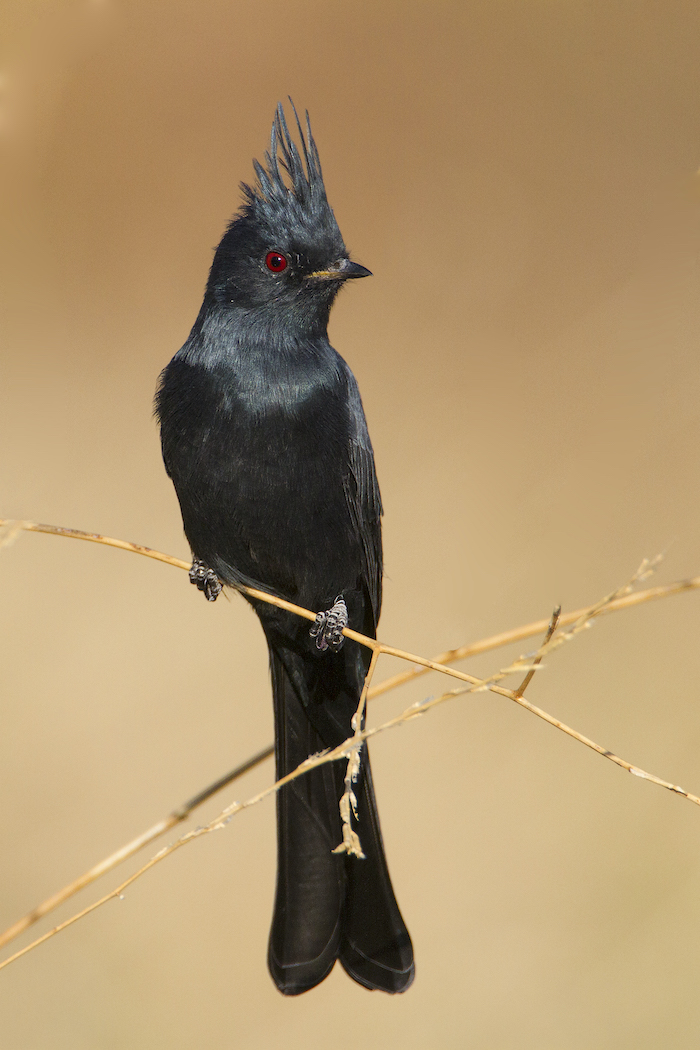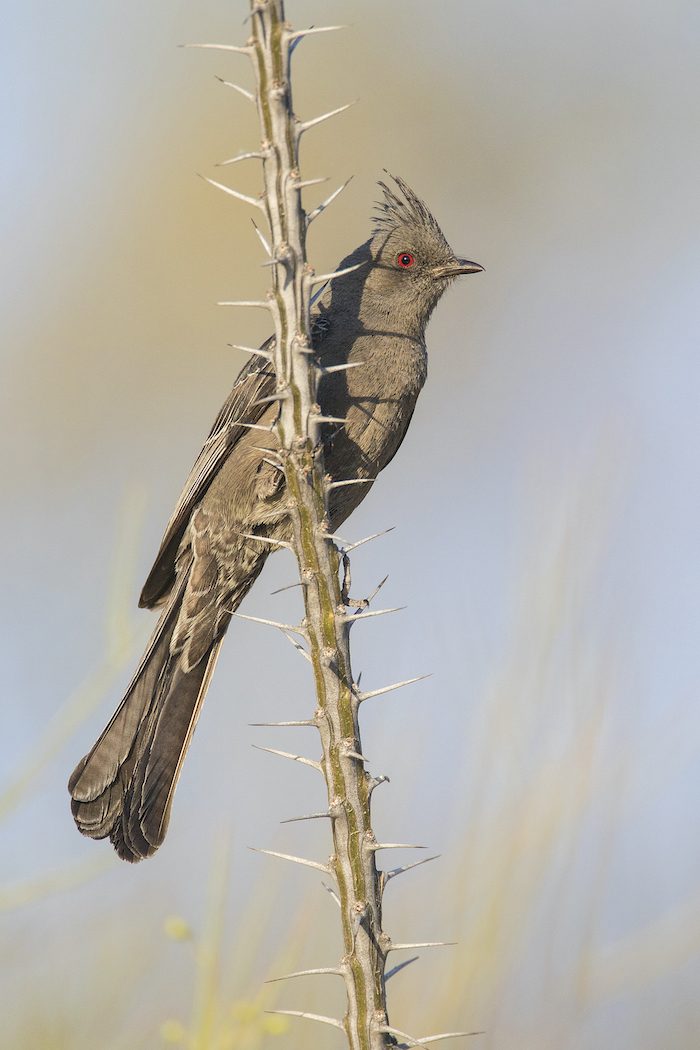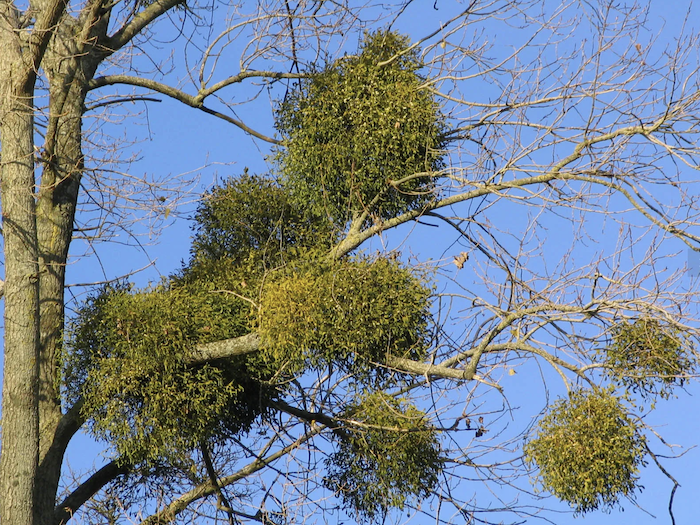
Phainopepla Male by David Bogener
Some birds just won’t do without a little pzzazz in their doing. Phainopeplas are among them, tip to tail.
They are slight birds, the length of a pencil, and nearly as much tail as anything else. But their eyes are cranberry red, and their heads sport flashy crests, erect feathers reminiscent of a Greek soldier’s helmet decor or a contemporary hairstyle.
And their feathers! Known as “silky flycatchers,” these birds paddle the air powerfully, but somehow retain a soft, fluttery quality to their wingbeats. In color, the females wear the gray-brown of nesting camouflage. Males, by contrast, wear glossy black, broken only by white wing patches that flash in flight. Their feathers earn the species its name. “Phainopepla” comes from the Greek for “shiny robe.”

Phainopepla Female by David Bogener
Despite their haute couture getup, the males are no slouches in domestic duties. They begin in winter, by selecting a nesting site, usually 10-20 feet up a tree in mistletoe. Then they dance in the air high above it, hoping to impress a female by fluttering, diving, and flashing their wing patches. They entice the females with ritual feeding of berries or insects. Once a pair forms, the male builds a tidy, palm-sized nest, woven together with spider silk and lined with hair or feathers. She may add some lining, and then lays 2-3 eggs.
The pair share two weeks of incubating duties, and typically do not leave the nest until replaced by a mate. After the eggs hatch, both parents care for the young through fledging at about three weeks old.
Like most songbirds, phainopeplas feed their children insects, providing a high protein diet that lets the young develop quickly. For themselves, however, they eat mostly berries, and mistletoe is a particular favorite. Although toxic to us, mistletoe berries pass through the phainopeplas’ digestive tracts quickly, imparting no poison but also little nutrition. The birds make up for the quality of the berries with quantity, eating up to 1100 mistletoe berries a day. In defecating those berries they help spread mistletoe to new growing sites.

Mistletoe
Food may or may not shape human culture, but it seems central to phainopepla society. Mistletoe clumps provide both food and nesting-site cover. Egg-laying appears to be timed with its berry-ripening. Where mistletoe is scarce, a pair will defend its mistletoe turf, chasing off other phainopeplas. Where mistletoe is abundant, many phainopeplas may nest colonially, sharing the resource and chasing off invaders such as bluebirds, which also eat mistletoe, and scrub-jays, which eat eggs and nestlings.
The guidebooks indicate that phainopeplas migrate south from their northernmost range, here in Shasta County, but they have been found in the area year-round. Mistletoe is abundant in the blue oak woodlands, and even outside breeding season makes a good place to find these birds. Look just above mistletoe clumps for a slender, upright phainopepla guarding its food source. A thriving population of the birds was recently observed south of the Redding Airport at Fairway Oaks Mobile Home Park and the adjoining Tucker Oaks Golf Course.

Great insight to these beautiful “silky flycatchers.” Plus the incredible photos from David Bogener. David will be showing many of his incredible photographs from Costa Rica in his upcoming presentation on September 7th at 7pm. Check our calendar page for more information.